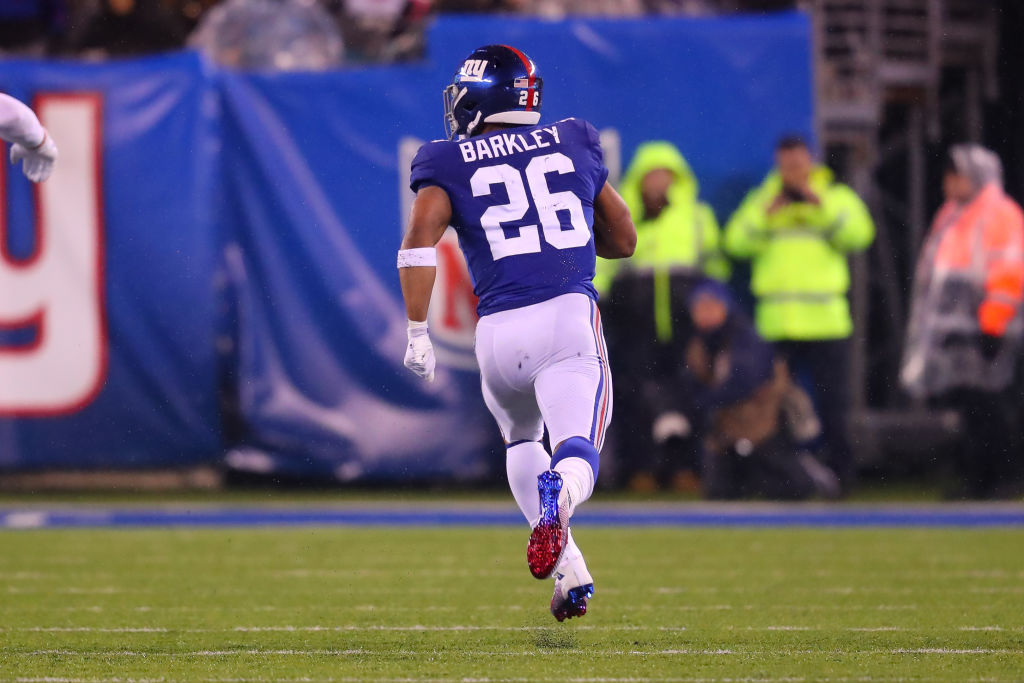NFL
Why Do Football Players Wear Bands Around Their Biceps?

Over the past couple of decades, football stars like Cam Newton have impressed and occasionally baffled fans with their fashion sense. But style doesn’t stop when the NFL players step on the field. One clothing item that’s turned heads over the years is a band many players wear on their biceps.
Doing their best to stay within the uniform rules of the NFL, many players still find ways to express themselves. But what’s the point of the armbands? Are they just for fashion or do they have some on-field utility?
What bicep bands do (and don’t)
RELATED: Why Do NFL Referees Have Numbers on Their Uniforms?
Ostensibly, the bicep bands function similar to wristbands. Preventing sweat from dripping down players’ arms allows them to better grip the ball. Keeping tightness on vulnerable muscles like biceps and triceps can prevent injury and guard against hyperextension.
But there’s no scientific proof that the bands do anything but look cool — and that’s just fine if you’re one of the players who’s been known to sport them. Sweatbands are nothing new, but it doesn’t seem putting them on the upper arm does anything useful.
No NFL fan can forget the Antonio Brown Helmet Saga of 2019. What started as a player preferring one type of helmet spiraled into one of the most bizarre stories in recent football history. And while AB’s personality and mental state certainly contributed to the sequence of events, it all started with the NFL’s uniform regulations.
Along with helmet regulations, the NFL has done everything they can to restrict players’ self-expression when it comes to footwear. The league needs to stay cohesive and present a unified message, but it does seem to be overstepping its bounds in some cases.
Self-expression in the NFL
RELATED: What Do Uniform Numbers Mean in the NFL?
Armbands give NFL players another piece of fabric to express themselves with. Additionally, players can use them for valuable sponsorship space. The NFL sponsorship rules prevent shilling for particular brands. But the bands also provide a space for the NFL to recognize specific causes.
Players prominently wore pink during October games until only a couple years ago, and cancer awareness is still a central theme of the NFL’s Crucial Catch campaign. Many players also chose to sport pink armbands, using the month to attract attention to their muscles.
As the NFL grapples with the reality of coronavirus and America looks forward to the upcoming season, it’s a good bet that the league is also worried about how players will react to another season of a league that has done very little to address a long history of racist allegations.
With armbands available as a form of self-expression, the NFL will likely do what they can to ensure that any designs are acceptable and non-political.
The New York Times published an article about the bicep bands trend. They noted that the National Federation of State High School Associations already chose to ban them in 2008. If there were any benefit to wearing them, it’s likely the NFHS would have avoided the ban. Interestingly, the NFHS (along with the NFL) has done little to address the also-common knee bands.
Arm bands, knee bands, and the upcoming season
But as any Kansas City fan knows, knee injuries are infinitely more treacherous. The ACL and MCL can be thrown off by the slightest destabilization, meaning that knee bands may do what arm bands don’t–actually protect the body.
While the NFL hasn’t gone as far as the NFHS, it does keep tight limits on what sections of the uniform players are allowed to modify. In the upcoming season, which has the potential for plenty of controversies, it’s likely the league will keep a close eye on what players choose to sport on their upper arms.











